The Planets - and other bodies -
of the Solar System

Brightly glowing lava from
the volcano Pele is seen in this image taken by NASA's Galileo
spacecraft as it receded from its close flyby of Jupiter's
moon Io in October, 1999. The image at left shows Io's surface
in approximately true color, centered on the large red ring of
sulfur that was deposited by Pele's plume and reaches more
than 1,300 kilometers (808 miles) in diameter. A false color
infrared composite of the same region is shown on the right.
The dark red dot at the center of the ring (seen in the false
color picture) is the glow of hot lava at the heart of the
volcano. Temperatures up to 1,027 degrees celsius (1,880
degrees fahrenheit) have been previously measured for Pele's
lava. The glow is bright enough to be imaged in daylight,
allowing scientists to precisely pinpoint the eruptive center.
The
Planets of the Solar System
My Very
Educated Mother Just
Served Us Nine
Pickles |
This page has a variety of
links to videos with sound.
|
Mercury |
Venus |
Earth |
Mars |
Jupiter |
Saturn |
Uranus |
Neptune |
Pluto |
| diameter ( Earth=1 ) |
0.382 |
0.949 |
1 |
0.532 |
11.209 |
9.449 |
4.007 |
3.883 |
0.180 |
| mass ( Earth=1 ) |
0.055 |
0.815 |
1 |
0.107 |
318 |
95 |
15 |
17 |
0.002 |
| average distance from Sun (
AU
) |
0.39 |
0.72 |
1 |
1.52 |
5.20 |
9.54 |
19.18 |
30.06 |
39.44 |
| time to orbit Sun (
in Earth years ) |
0.24 |
0.62 |
1 |
1.88 |
11.86 |
29.46 |
84.01 |
164.8 |
247.7 |
| length of day ( in
Earth days ) |
176 |
117 |
1 |
1.03 |
0.41 |
0.44 |
0.72 |
0.67 |
6.38 |
| temperature at surface (
C ) |
-180 to 430 |
465 |
-70 to 55 |
-120 to 25 |
-150 |
-180 |
-210 |
-210 |
-220 |
| gravity ( Earth=1 ) |
0.38 |
0.9 |
1 |
0.38 |
2.64 |
0.93 |
0.79 |
1.12 |
0.04 |
| number of moons |
0 |
0 |
1 |
2 |
16 |
18 |
15 |
8 |
1 |
| rings |
no |
no |
no |
no |
yes |
yes |
yes |
yes |
no |
The Inner Planets:
The inner, or Terrestrial,
planets are: Mercury,
Venus, Earth, and Mars. They are small (because of multiple collisions
during their formation) rocky planets with an atmosphere
without primordial hydrogen and helium due to their small
gravitational pull.
1. Mercury:The closest planet to the Sun.

2. Venus: Our
Sister planet.

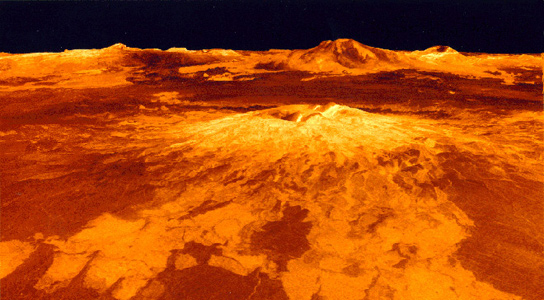

The most detailed radio map of the planet was made by the Magellan
space-craft, which clearly shows that
Venus has
an active volcanic surface with mountains.
3. Earth: Our Home!

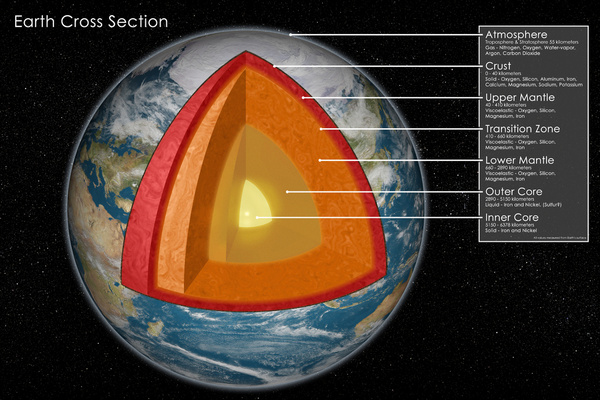
The interior of
the Earth consists of four layers:
-
An inner core, which is solid metal;
-
A liquid core, which is molten metal;
-
A mantle, which behaves almost like plastic;
-
A
crust,
which is divided into two kind of plates: Oceanic and
Continental.
The Earth's atmosphere
consists of approximately 80% Nitrogen and 20% Oxygen.
Moon: Our
only satellite.

Besides the Earth
in which we live, the only other celestial body in which
humans have landed is
the the moon; the first landing took place on July 20, 1969 by
the Apollo 11 crew.
4. Mars: The red
planet.
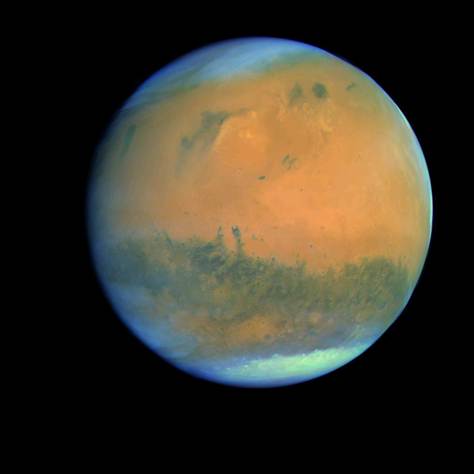
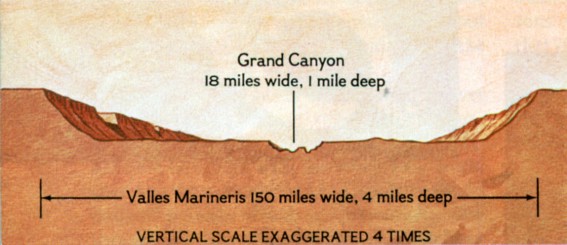
Huge canyon Valles Marinaris (4000km long).
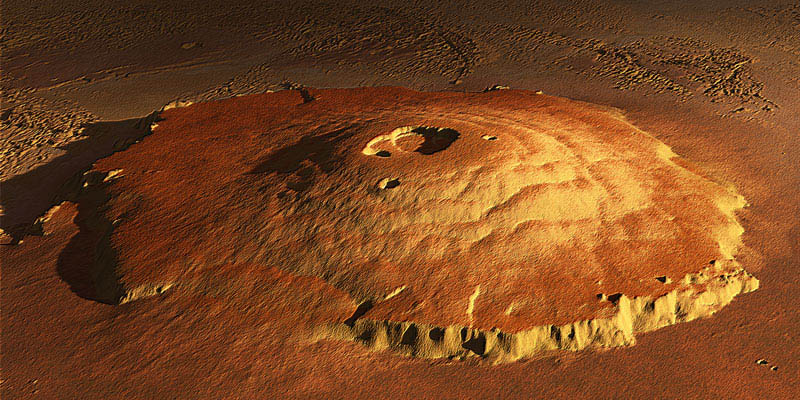
Huge volcano: Olympus Mons
(24km high).
Mars' red color is due to
Iron Oxide
on its surface. Mars is
about half the size of the earth, it has two moons (Phobos and
Deimos) and and a very large canyon on its surface. It
has a thin cold atmosphere and evidence for ice water on the
polar caps. The role of liquid water (in the form of dry river
beds) on possible life on Mars in the past ... is still
unknown.
The Outer Planets:
The outer, or
Jovian, planets are: Jupiter,
Saturn, Uranus, and Neptune. They are massive (at least 15 times as massive
as the Earth) gaseous planets with atmospheres rich hydrogen,
helium, and other gases.
5. Jupiter:
The titan of the planets.

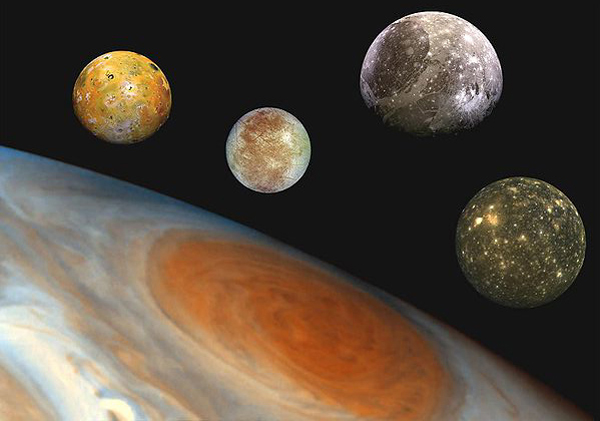
Jupiter has a very similar composition as our Sun; it consists
mainly of hydrogen
and helium. There are very large structures on its surface,
such as the Great Red Spot
which are due to the convective flow of gas.
Jupiter also has a strong magnetic field and magnetosphere. Until now, 16 moons have been observed in
Jupiter, with the four largest known as the Galilean
moons:
-
Io
See also this
videoclip for Io.
-
Europa
-
Ganymede
-
Callisto
6. Saturn: The
quintessential of the planets.
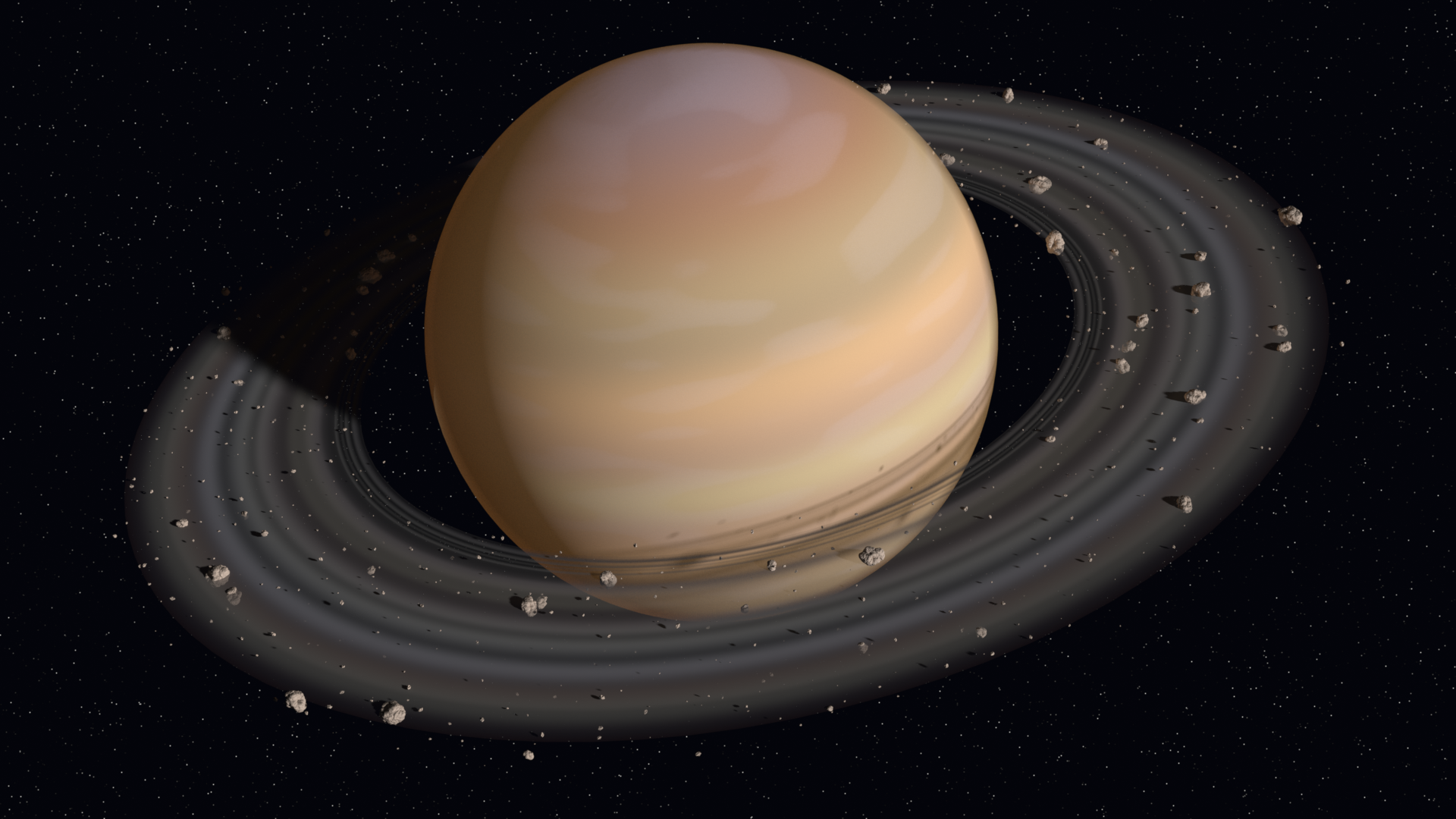
Saturn is the
second largest planet in our solar system. Saturn has
similar constitution to Jupiter; its surface has zones of
rings and belts. It has a beautiful ring system
which is visible by a telescope. This ring system
was probably formed in the early stages of our solar system
formation.
7. Uranus: The tilted planet.

Uranus rotates on
its side, with its axis tilted 98 degrees relative to its axis
of revolution around the Sun. Because Uranus is so far away
from the Sun (19 AU) the length of its year is 84 years. Thus,
each of its very peculiar seasons last about 20 years. For
example, during the summer, the southern hemisphere receives
no light for almost 20 years! Uranus is now known to have 15
moons.The
most famous and largest of its moons is Miranda.
8. Neptune: The windy planet.

Neptune was
observed closely by Voyager II
in 1989. The largest feature observed was the Great Dark Spot,
roughly the size of Earth. Neptune displays a violent and
changing atmosphere with some of the strongest winds ever
recorder in the Solar System. Indeed, its atmosphere is so
dynamical that recent photographs of the HST show no evidence
of the Great Dark Spot. Neptune is similar in composition to its neighbor Uranus and has an interesting
ring system.
It also has one of the largest moons in our solar system:
Triton.
Triton has an interesting atmosphere an structure.
Neptune was discovered on purely theoretical grounds on the
basis of the "disobedient" motion of its neighbor Uranus.
9. Pluto: The "odd-man" out.

Pluto is - most of the time - the most distant
planet in the Solar System. Pluto is also peculiar in that it
does not fit the general classification of inner nor outer
planets. Moreover, its orbit around the Sun is tilted by more
than 17 degrees relative to the the plane of the ecliptic.
This is a large deviation from the orbit of the other planets.
















